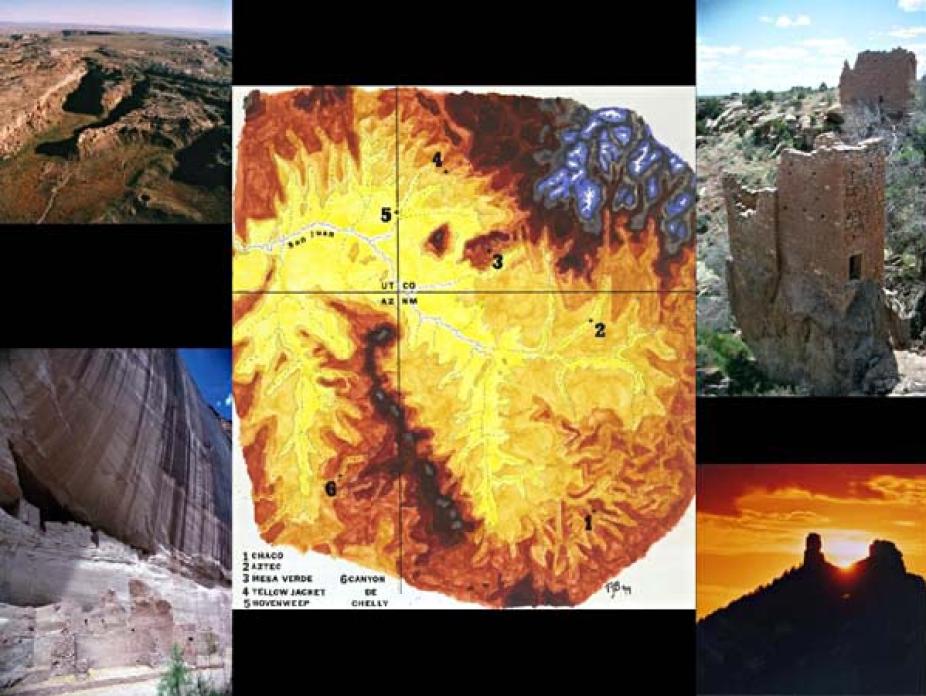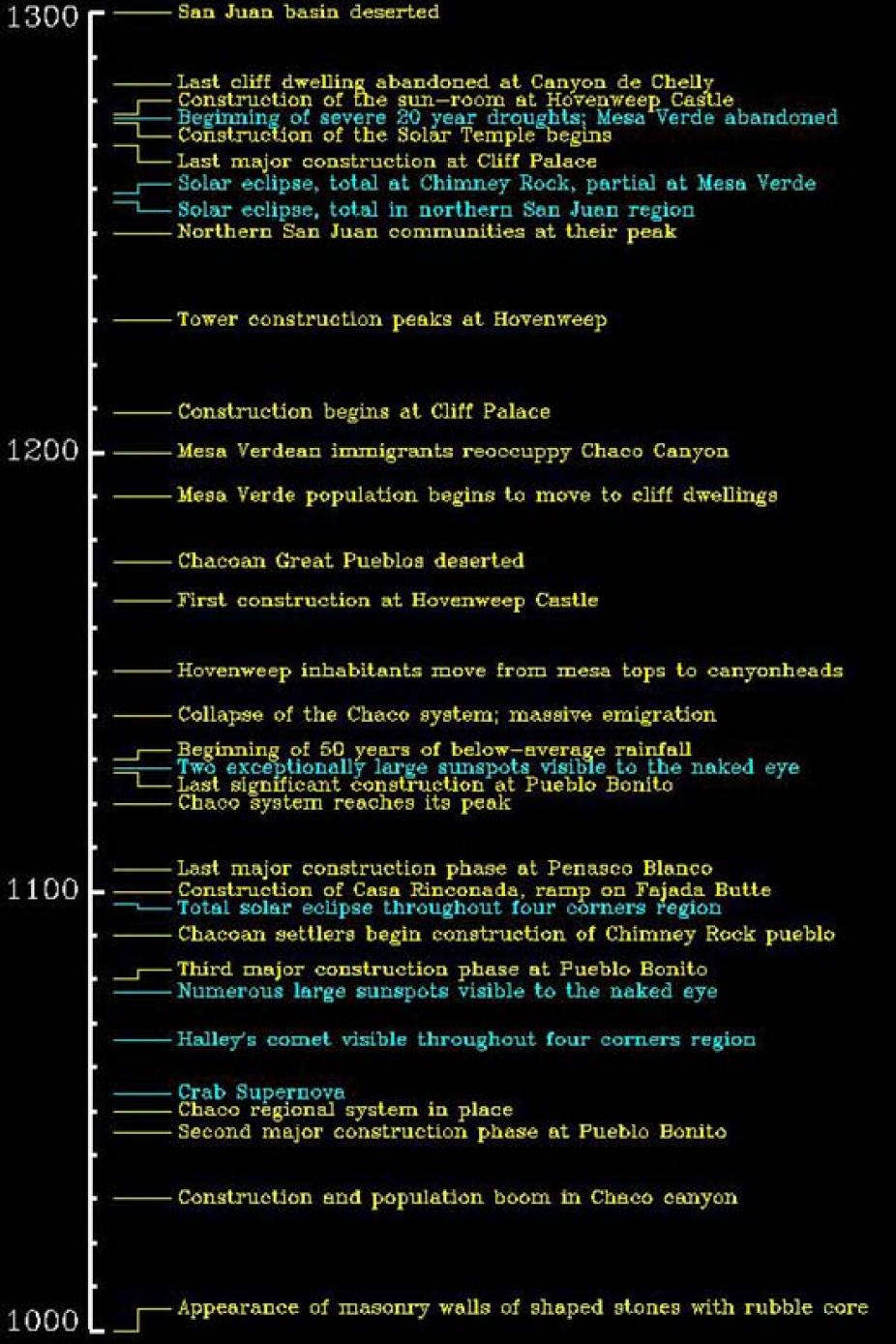The Ancient People of the American Southwest

Figure 1. Map of San Juan River basin surrounded by (clockwise from upper right): Casa Rinconada area in Chaco Canyon, Holly House Ruins in Hovenweep, the twin towers of Chimney Rock, and White House Ruin in Canyon de Chelly.
The Anazazi (ah-nuh-SAH-zee) were ancient Native American people inhabiting North America during 700–1200 AD. “Anasazi" is a Navajo word which, depending on pronunciation, means either “enemy ancestors” or “ancient people who are not us”. Today, the more historically correct label is "Pueblo (Spanish for 'village') people" or Puebloans.
The Puebloans lived in the Four-Corners area of Colorado, New Mexico, Arizona and Utah. It is more appropriate to define this region in terms of the drainage basin of the San Juan river, shown on the map in the center of the figure 1. To get a sense of distance, note that Chaco Canyon (map labeled 1) and Mesa Verde (map labeled 3) are separated by 160 km. The San Juan basin cuts through high desert plateaus; Chaco Canyon is about 1900m above see level, Mesa Verde 2200m, and Hovenweep 1650m. Most tributaries of the San Juan dry up in the summer, with the only perennial streams found in the northernmost regions, at higher elevations. The sites listed on the map represent but a small subset of prehistoric towns and dwellings to be found in the region.

Figure 2. Timeline of important events in the Puebloan world.
These ancient people of the San Juan basin practiced sedentary farming and some hunting and gathering. Living first in subterranean rooms known as pit-houses, by approximately 500 AD the population became increasingly concentrated in villages of above-ground dwellings. By 700 A.D. stone masonry was becoming increasingly common, and by the mid-900s the Anasazi lived in large multi-rooms, buildings, now referred to as pueblos, on canyon floors and mesa tops. The Anasazi exploded, culturally and socially, in the following three and a half centuries. The timeline (figure 2) lists important events in the Puebloan world of 1000–1300 A.D., together with a few astronomical events of importance.
In the late 1000s and early 1100s the Anasazi culture radiated far beyond the four corners region, with Chaco Canyon becoming the dominant social and cultural center. For reasons not yet properly understood, by the mid-1100s the Chacoan system collapsed, leading to the abandonment of Chaco Canyon. Some Chacoan relocated North to what are know Aztec and Salmon Ruins, in Northern New-Mexico, but this was short-lived. The Puebloans continued to prosper in the Northern San Juan basin, notably at Mesa Verde, but by the end of the late 1200s the region was rapidly abandoned. What fate befell the Puebloans remains a mystery. There has been plenty of speculation by anthropologists, historians, biologists and others, including several theories discussed such as enemy attacks, drought, an epidemic, or religious strife, but nothing is conclusive.